
Vistas del Coco sounds like the name of a residential complex or one of those condos that real estate agents hope to sell to people dreaming of their own house. But in reality it’s an archaeological site where a pre-Columbian cemetery that houses the remains of first inhabitants in the area we today know as Guanacaste.
Research carried out by archaeologists at the National Museum found that these Guanacastecan ancestors ate corn, had a short lifespan, lived with dogs or coyotes, started adding color to their pottery, and had commercial relationships with other groups in Central America.
Located on a small hill some 500 meters from the shoreline in Playas del Coco, this cemetery was excavated between June, 2014 and January, 2015.
“We found 111 burials (graves) with human remains and around 920 ceramic and stone objects used as offerings,” said archaeologist Felipe Solís, the project’s director.
The researcher said that they performed two carbon-14 analyses in order to determine the exact time of occupation. According to these estimates, the cemetery was used between 540 and 885 A.D.
Who Were They?
The bones are in poor condition and in some cases only a few dental pieces remained. However, researchers were able to garner important information about these pre-Columbian Guanacastecans.
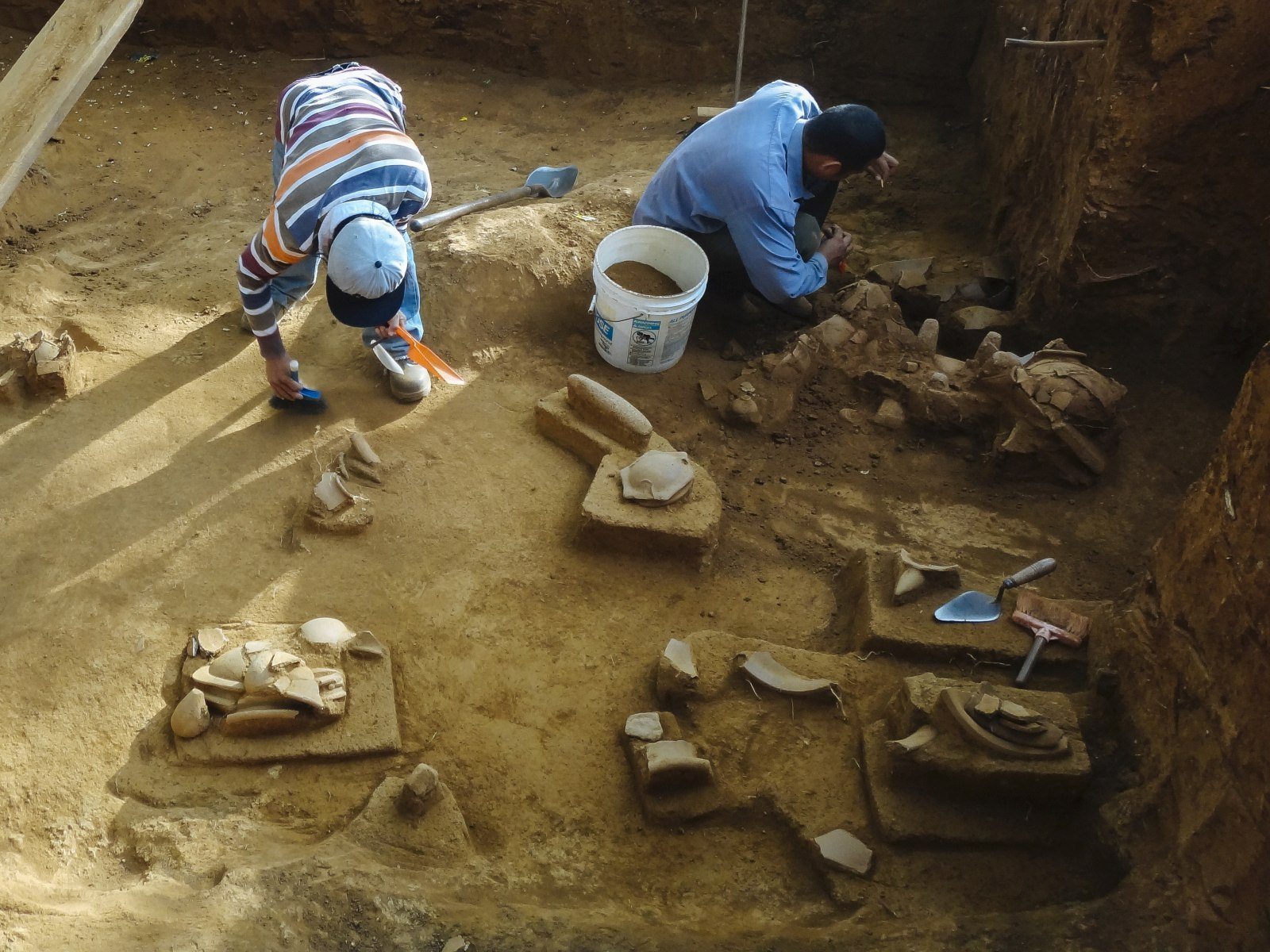
In a 620-square-meter excavation area 111 burial sites were found.
“The graves were concave in shape and within them the body was placed in a bent position. Around the body they placed belongings or offerings,” said Solís.
As part of the funeral rituals, these people broke ceramic objects and used the fragments to “seal” the tombs.
Finding bones from several individuals in the same grave suggests to archaeologists family members were buried together, and that this was a communal cemetery.
“There is a wide range of ages in the sample: children, adolescents, and adults. The oldest person was around 50,” added the archaeologist.
They also found animal bones from the canine family, which experts suspect were from a dog or coyote.
The tombs were dug into the subsoil, which is comprised of ignimbrite, a soft volcanic rock known locally as “cascajo.” The rock is common in Liberia, Bagaces, and Playas del Coco.
“Some of the graves are quite shallow at only 40 centimeters deep, but some go as deep as two-and-a-half or three meters,” he said.
Looting Brought About Discovery
The first time officials knew about this site was in 1997 when the National Museum received complaints of looting archaeological artifacts in a foreigner’s property where he wanted to build a house. An agreement with the owner was reached and preliminary rescue efforts began. At this time three funeral areas were defined, but only one was worked on.
At the beginning of 2014 the property acquired a new owner who hired an independent archaeologist to carry out an impact study which determined that the area held a large amount of pre-Columbian treasures.
Months later, the National Museum sent a team of experts headed by Felipe Solís to excavate and recover the pieces.
First Pottery
If there is a single element that characterizes Guanacastecan pottery to this day it is the polychromatic style with beautiful colors.
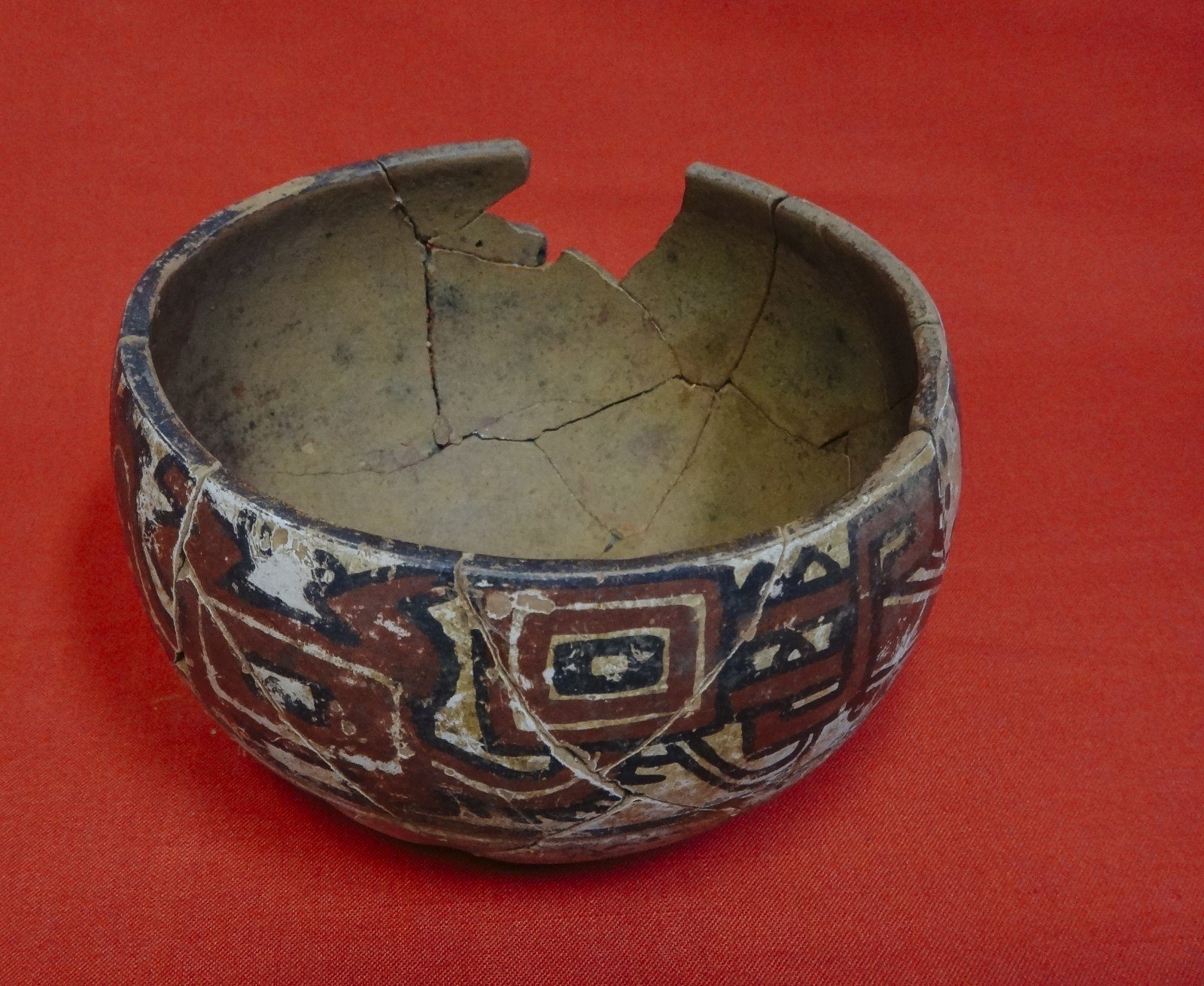
Some pieces show the beginnings of polychromatic Chorotega pottery
This was inherited from the Chorotega. However, before the Chorotega there were other cultural groups whose mark is felt at this cemetery.
Ceramic pieces found at Vista del Coco have characteristics of cultures that were around before the Chorotega, likely the Chibchan, which includes a family of indigenous languages spoken in the territories that today are Honduras, Nicaragua, Costa Rica, Panama, and Colombia.
“Most of the objects are simple, monochromatic ceramic pots linked to everyday life. But we also found some pots decorated with incisions and black-and-white paintings,” said Solís.
One of the pots was found with carbonized corn residue, which shows that this product was part of their diet.
Regarding stone objects, the researchers revealed that they found some simple tripod grinding stones with very little decoration. “There were three [grinding stones] a bit more decorated with panels featuring spirals, lines, and drawings other objects used for hand milling.”
Treasures
Archaeologists also recovered some body decoration such as pendants made with green and white stones, and a collar made with shark vertebrae and teeth.
One of the most surprising finds was two obsidian chips. Obsidian is a glassy volcanic rock that was likely used as a cutting tool. “Something like knives,” said Solís.
The appearance of this volcanic glass is an indicator of commercial exchange among Guanacastecans and other Mesoamerican cultures.
“We don’t have any knowledge of Costa Rica having sources of obsidian that could give produce chips this big. This means that even before 300 A.C. there were strong trading networks with other groups in Central America,” added Solís.
Paradoxically, 1,500 years after Guanacaste’s ancestors rested under ground, new generations will live on the land. Once the archaeological digs are wrapped up, the land will become a housing development.


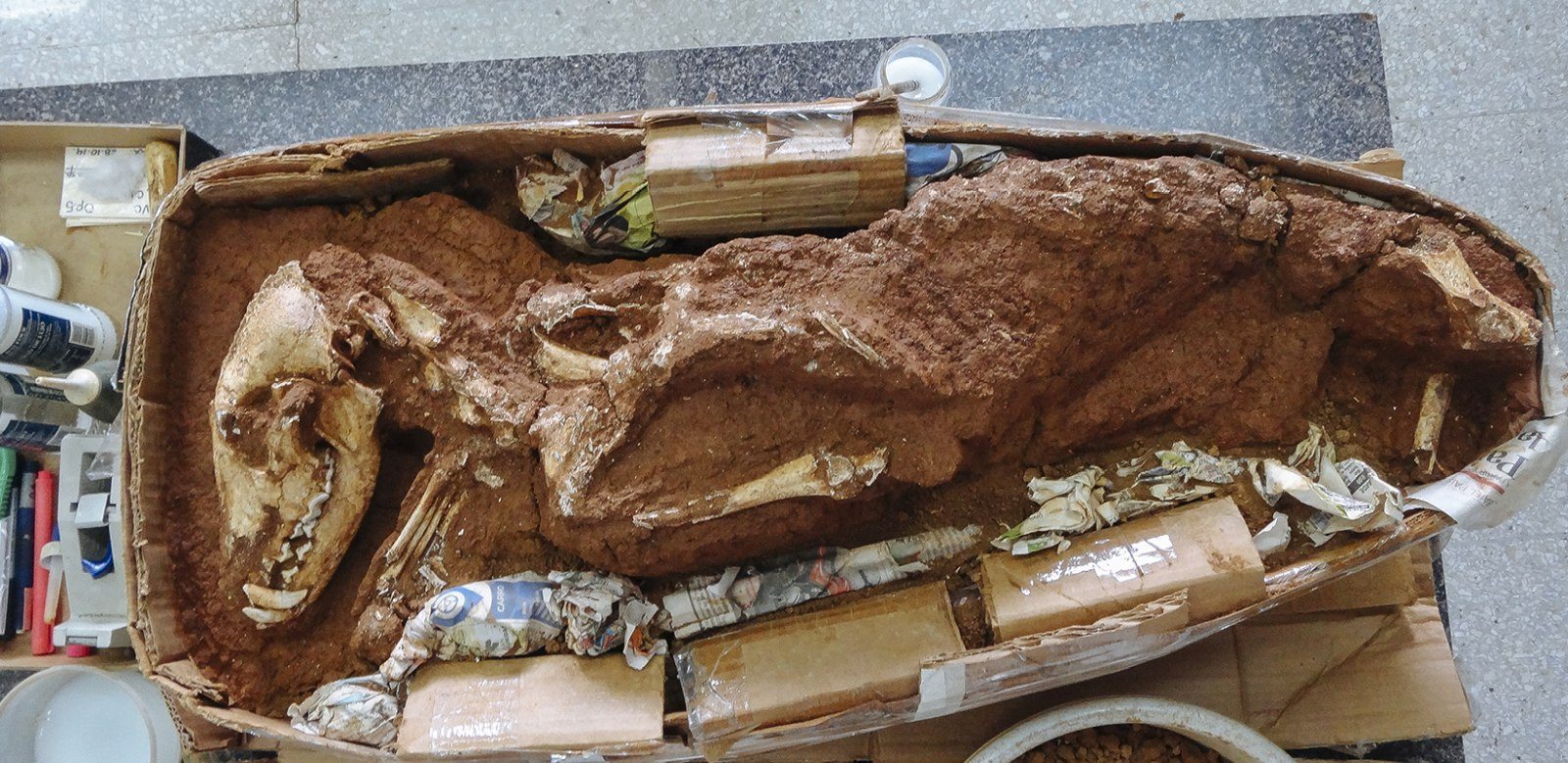
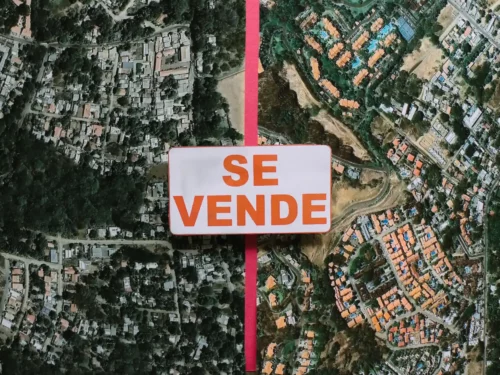
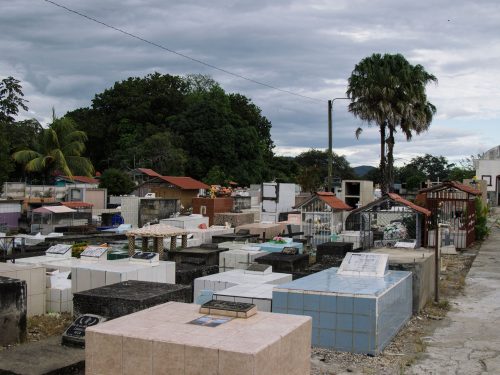
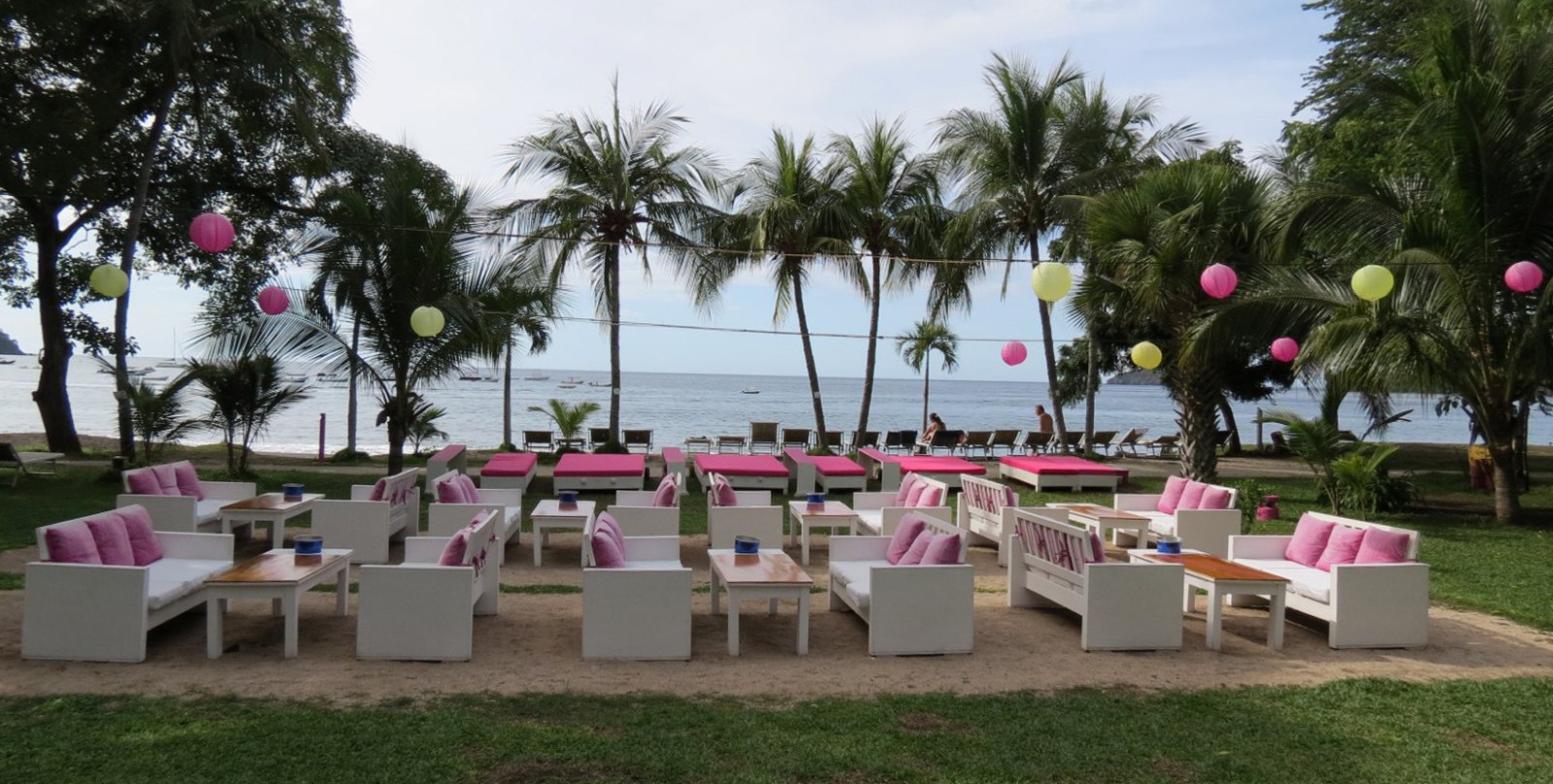

Comments